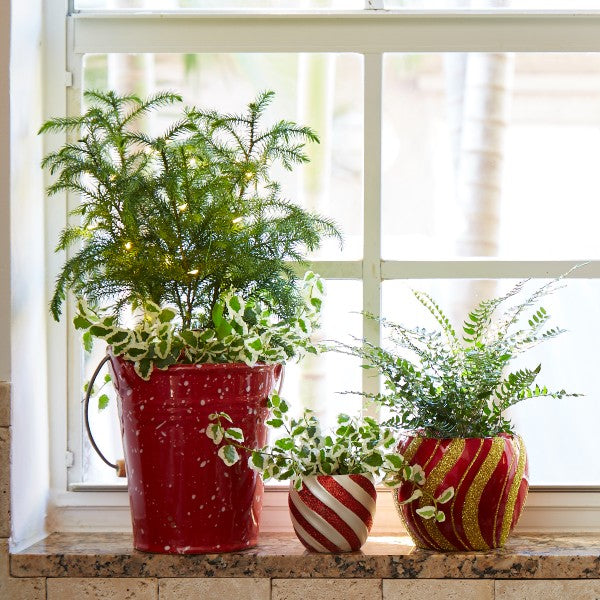
Gifting Plants: A New Holiday Tradition
The winter holidays have their traditional plants: poinsettias with their cheery red bracts, Christmas cacti with their succulent leaves and pink, red, and white blooms, and Norfolk Island pines, little Christmas trees with all-year-round good looks.And there are so many more plants that can make your holidays festive -- for decorating your home (see these 8 ideas) or for giving as gifts.
In fact, giving houseplants as gifts is a brilliant solution to the problem of figuring out the perfect gift. Everyone loves plants. Here are some leafy and colorful ideas for the people on your holiday list.
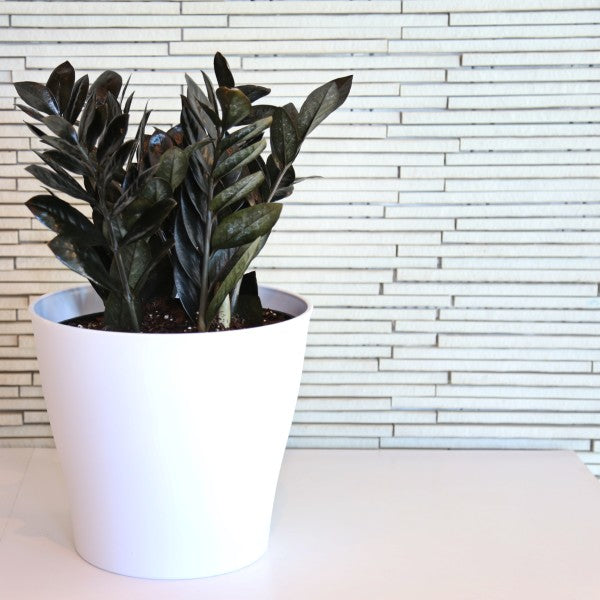
For the Trend Watcher
ZZ Plant (Zamioculcas zamiifolia)In 2019, a new member of the ZZ genus made news. It won awards, became the darling of social media, and had plant lovers stalking garden centers for fresh shipments. Houseplant trend watchers all love Raven® ZZ plant.
This gorgeous newcomer is just as easy to grow as its green-leafed parent, but Raven® offers something dramatically different -- spectacular dark purplish-black foliage that doesn't fade as the leaves mature. New foliage starts out green and turns dark, remaining that way throughout its life. It’s truly a one-of-a-kind introduction that’s super easy to grow.
Read more about ZZ here.
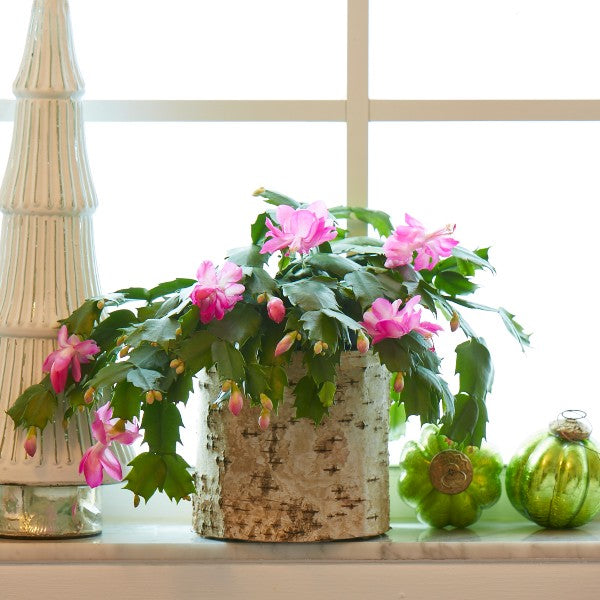
For the Flower Lover
Christmas cactus (Schlumbergera)Christmas cactus are jungle plants that have made it into holiday tradition, thanks to their orchid-like flowers that bloom in jewel-like colors. The most common colors of the blooms are pink, red, scarlet, and white, but flowers also come in cream, orange, gold, and bi-colors. Talk about the gift that keeps giving; a Christmas cactus can live for generations. They grow slowly, but eventually form large mounds of foliage and flowers. Although Christmas cactus bloom during the holiday season, there are other closely related varieties you can get to extend the bloom season as early as Thanksgiving and as late as Easter. Here are 5 reasons to give Christmas cactus.
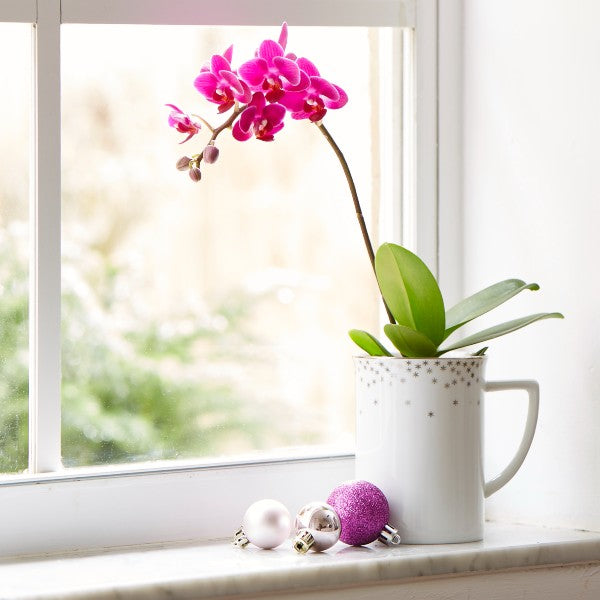
For the Romantic
Orchid (Phalaenopsis)Thin elegant stems that end in winged flowers are what give phalaenopsis orchid its common name: Moth orchid. Flowers start as plump round buds that stud each stem. They open from the bottom of the stem until the last bud at the tip of the stem bursts into bloom. The long spray of open flowers is called inflorescence. From the first bud to open to the last flower, a moth orchid can be in bloom for three months or more. And although orchids may look delicate, these plants are easier to grow than most other plants in your home. Learn more about orchids by checking out this Orchid’s Shopper’s Guide.
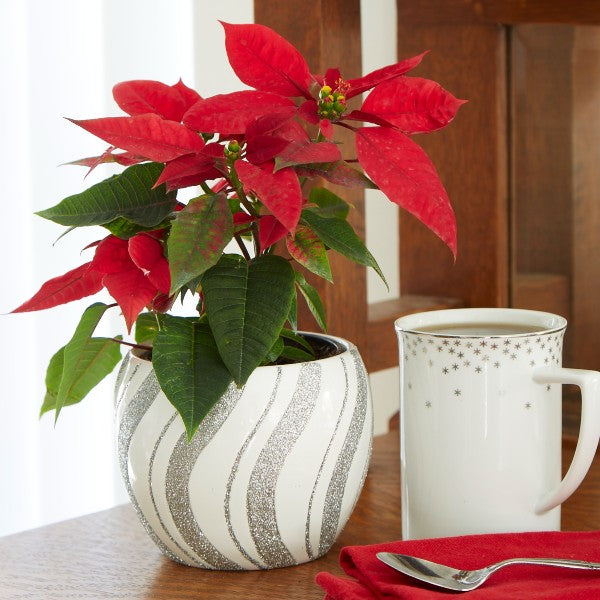
For the Traditionalist
Poinsettia (Euphorbia pulcherrima)Cheery poinsettia is a Christmas icon. A Mexico native, the poinsettia was spotted there by Joel Roberts Poinsett, America’s first ambassador to Mexico in 1825. Poinsett sent some plants back to the U.S. and the rest is history. Poinsettia feature colorful leaf bracts which surround the plant’s actual flowers, which are the tiny yellow buttons in the center. Poinsettias are so versatile holiday decor assets because they come in all shapes and sizes and they hold their vibrant color for months. Despite a long-held myth, poinsettias are not poisonous.
Here are five reasons to love poinsettias (even after the holidays are long over).
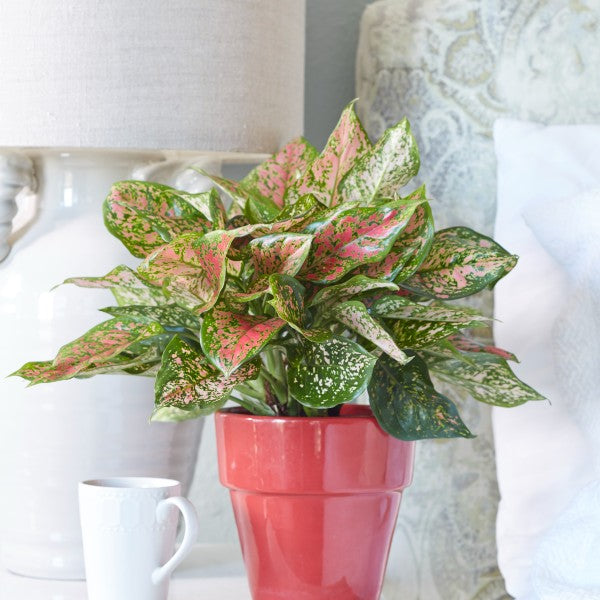
For the Colorist
Colorful Aglaonema (Aglaonema spp.)Colorful Aglaonema (say it like it’s spelled: Ag-la-o-ne-ma) is a flashy member of the Chinese evergreen family. This beautiful houseplant features variegated and bi-colored foliage in red, pink, chartreuse, and white. Colorful Aglaonemas make ideal gifts because they enhance indoor decor in the same way that holiday flowers do -- but they last so much longer. See how to use them as fresh stand-ins for holiday decor. In fact, you can use these plants in place of cut flower arrangements at holiday meals or front entryway tables then enjoy them throughout spring, then put them outdoors on your porch in summer.

For the Lover of the Tropics
Anthurium (Anthurium spp.)Anthuriums add a tropical flair with their glossy green leaves and big heart-shaped thick (almost leathery) pink, red, or white blooms. Originally from Central and South America, these beauties bloom all year round, so after the holidays, they will keep up the flower show. Additionally, individual blooms are long lasting. Anthuriums love humidity, so they are ideal for bathrooms (see other houseplants that love steamy environments). Or you can use a pebble tray under its pot to increase the humidity, especially in winter.
Here are 5 reasons to add anthuriums to your home all year round.
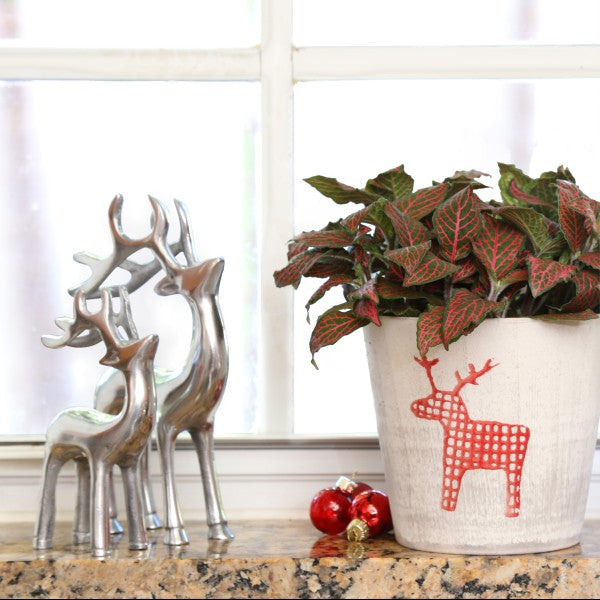
For the Detail Oriented
Fittonia (Fittonia spp.)If you love attention to intricate detail, the finely etched colorful leaves of fittonia may leave you staring deeply into the plant for hours. Also called nerve plant, due to the network of nervelike lines that spread throughout the leaves, fittonia offers a range of colors to fit any decor. Nerve plant's rich green leaves are threaded with bright pink, red, or white veins. This compact plant loves humidity, so it’s a great option for terrariums.
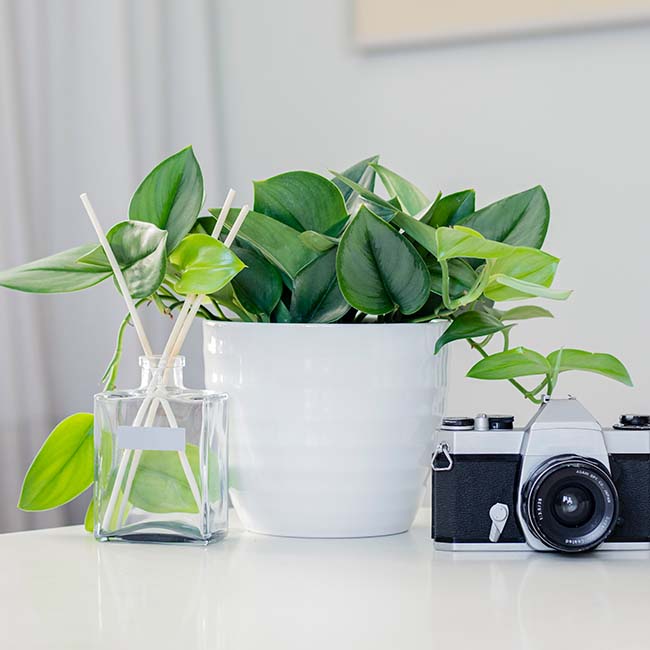
For the Glitter Girl
Silver-leafed plants are also great holiday gifts. Sterling Silver (aka Moonlight) Scindapsus has showy thick, heart-shaped leaves that are overlaid in silver. Get your silver fix with the showy, metallic dotted leaves of Polka Dot Begonia (Begonia maculata). Calathea roseopicta 'Medallion' offers dark green leaves with silver and emerald green bands. Watermelon peperomia (Peperomia argyreia) features beautiful tear-drop shaped green leaves that are painted with dramatic silver stripes. And silver-variegated Pilea Dark Mystery offers a shimmery little plant for terrariums or shelves.
















